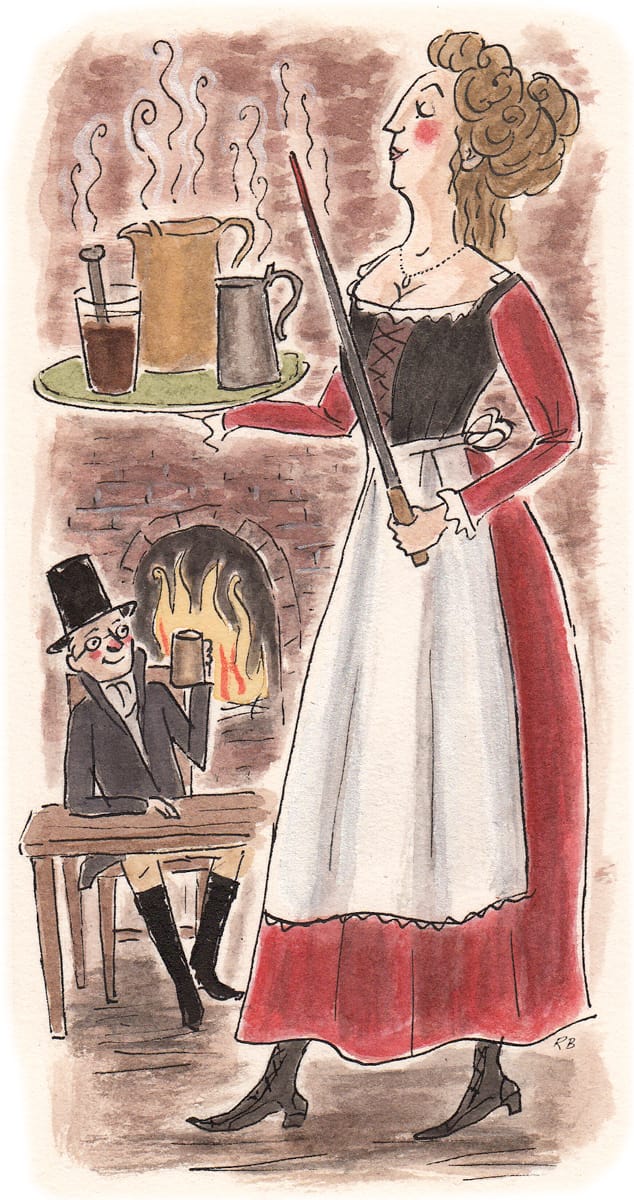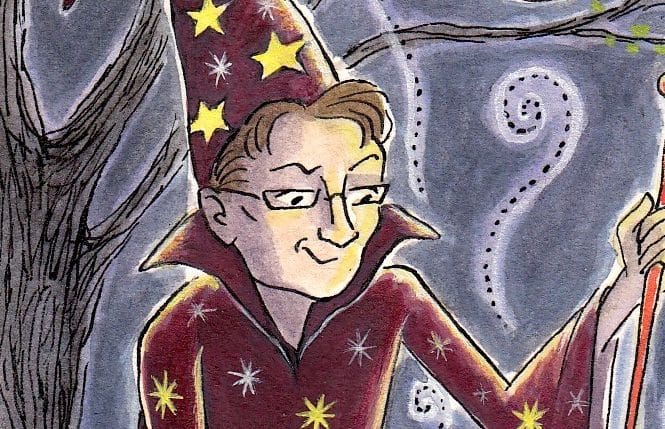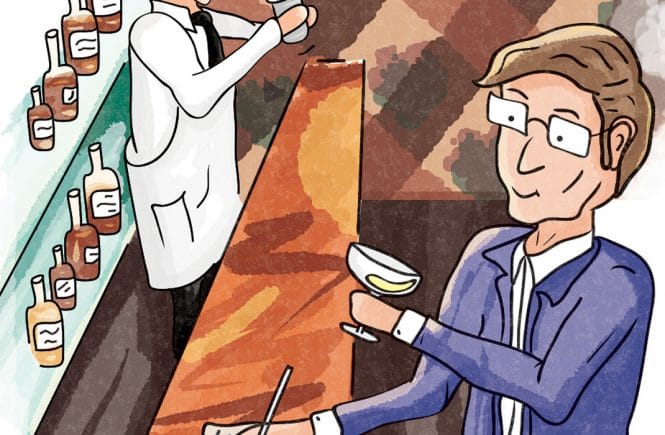Our man at the bar, John Burns, discovers the joys of warm beer

It’s not everyone’s cup of tea, reading 141 books over the course of a few months, but that was a side project of mine over the fall and if I’m going to be completely frank, since we’re old friends now, I’ll admit that it wasn’t always tea in my cup as I worked my way through eight linear feet of Canadian nonfiction.
Now that I’ve finished the reading, you’d think I’d never pick up a book again, but I found myself leafing through Charles Dickens the other day—it’s the snap in the air—and came across this passage from Our Mutual Friend: “The bar of the Six Jolly Fellowship Porters was a bar to soften the human breast.…[The rooms] had red curtains matching the noses of the regular customers, and were provided with comfortable fireside tin utensils, like models of sugar-loaf hats, made in that shape that they might, with their pointed ends, seek out for themselves glowing nooks in the depths of the red coals, when they mulled your ale, or heated for you those delectable drinks, Purl, Flip, and Dog’s Nose.”
There’s something so alluringly cozy about that image — and the pub’s “polite beer-pulls that made low bows when customers were served.” It all feels ideal for a Vancouver winter night, when that foggy mist droops down as the sun sets at, what, 2:30 p.m.? A Purl, I learned from some online salivating, is a mixture of gin and English bitter, sometimes served hot. The Dog’s Nose variant, according to The Pickwick Papers, is “to be compounded of warm porter, moist sugar, gin, and nutmeg.” Oh, and a Flip is distinguished by eggs. Beat eggs with rum and a little sugar, honey, or molasses, then add warmed ale to the mixture and pour between two glasses several times until blended. The optimal texture is captured in the name of one version: the Yard of Flannel.
Fun fact: beer, when not mulled in sugar-loaf tins, was traditionally heated by a thick iron bar (a “loggerhead”) plunged into the liquid to caramelize the sugars.
Fun fact: beer, when not mulled in sugar-loaf tins, was traditionally heated by a thick iron bar (a “loggerhead”) plunged into the liquid to caramelize the sugars, and you’re welcome to authentically loggerhead your Flip (we’re all adults here), but you’ll also need to authentically live in a smoky eye-stinging haze that may never clear. I, for one, embrace the age of the electric stove. (I checked: my Boston round doesn’t fit in the microwave.)
We can go on. A Posset is like hot cottage cheese with liquor: beer curdles milk or cream, separating the proteins into floating curds (to eat on buttered toast!), and the drink below. Lamb’s Wool is a mulled punch (a.k.a. a wassail) with ale added, something nice and malty like an English brown — or perhaps a porter, if it’s not too roasty. A few years back, Jamie Oliver revived the 18th-century Huckle-My-Buff (“the pride of Sussex”): porter, French brandy, sugar, and an egg; mixed, pokered, and topped with nutmeg.
Heated — and spiced — beer cocktails were common in Dickens’ time, because they were filling and (the thinking went) more nutritious when warm. And reviving… to a point. In The Old Curiosity Shop, the awesomely named Dick Swiveller carries in “a great pot, filled with some very fragrant compound, which sent forth a grateful steam, and was indeed choice purl.” He offers a servant girl a swig. “But moderate your transports, you know,” he cautions. “For you’re not used to it.”
—by John Burns




